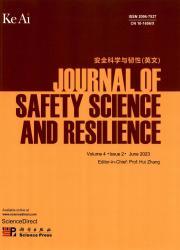DDC-Chat: Achieving accurate distracted driver classification through instruction tuning of visual language model
IF 3.4
Q1 PUBLIC, ENVIRONMENTAL & OCCUPATIONAL HEALTH
引用次数: 0
Abstract
Driver behavior is a critical factor in road safety, highlighting the need for advanced methods in Distracted Driving Classification (DDC). In this study, we introduce DDC-Chat, a novel classification method based on a Visual large Language Model (VLM). DDC-Chat is an interactive multimodal system built upon LLAVA-Plus, fine-tuned specifically for addressing distracted driving detection. It utilizes logical reasoning chains to activate visual skills, including segmentation and pose detection, through end-to-end training. Furthermore, instruction tuning allows DDC-Chat to continuously incorporate new visual skills, enhancing its ability to classify distracted driving behavior. Our extensive experiments demonstrate that DDC-Chat achieves state-of-the-art performance on public DDC datasets, surpassing previous benchmarks. In evaluations on the 100-Driver dataset, the model exhibits superior results in both zero-shot and few-shot learning contexts, establishing it as a valuable tool for improving driving safety by accurately identifying driver distraction. Due to the computational intensity of inference, DDC-Chat is optimized for deployment on remote servers, with data streamed from in-vehicle monitoring systems for real-time analysis.
DDC-Chat:通过视觉语言模型的指令调优,实现对分心司机的准确分类
驾驶员行为是影响道路安全的关键因素,因此需要先进的分心驾驶分类方法。在本研究中,我们引入了一种新的基于视觉大语言模型(VLM)的DDC-Chat分类方法。DDC-Chat是建立在LLAVA-Plus基础上的交互式多模式系统,专门针对分心驾驶检测进行了微调。它利用逻辑推理链来激活视觉技能,包括分割和姿态检测,通过端到端训练。此外,指令调整允许DDC-Chat不断融入新的视觉技能,增强其分类分心驾驶行为的能力。我们广泛的实验表明,DDC- chat在公共DDC数据集上实现了最先进的性能,超过了以前的基准。在对100个驾驶员数据集的评估中,该模型在零射击和少射击学习环境中都表现出优异的结果,通过准确识别驾驶员分心,将其建立为提高驾驶安全性的有价值工具。由于推理的计算强度,DDC-Chat针对远程服务器的部署进行了优化,并使用来自车载监控系统的数据流进行实时分析。
本文章由计算机程序翻译,如有差异,请以英文原文为准。
求助全文
约1分钟内获得全文
求助全文
来源期刊

安全科学与韧性(英文)
Management Science and Operations Research, Safety, Risk, Reliability and Quality, Safety Research
CiteScore
8.70
自引率
0.00%
发文量
0
审稿时长
72 days
 求助内容:
求助内容: 应助结果提醒方式:
应助结果提醒方式:


